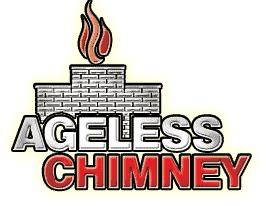Chimney Sweep in Fort Salonga, NY
What our clients say




Read About Us
Browse Masonry & Brickwork
contact us
Why Chimney Sweep Services Are Essential Before Winter in Fort Salonga, NY

Importance of Pre-Winter Chimney Sweep
As winter approaches in Fort Salonga, NY, it’s crucial to ensure your chimney is clean and safe. A professional chimney sweep can prevent potential hazards by removing debris and blockages that could lead to chimney fires or reduced efficiency. Scheduling a chimney sweep with Ageless Chimney ensures that your chimney is thoroughly cleaned and inspected, keeping your home heating system safe and efficient.
Trust our team of experts to provide top-notch chimney maintenance services, giving you peace of mind as you prepare for the colder months. Contact Ageless Chimney today to schedule your chimney sweep.
Experienced Professionals
Our team has years of experience in providing top-notch chimney sweep services in Suffolk County.
Reliable and Efficient
We use the latest tools and techniques to ensure your chimney is cleaned thoroughly and efficiently.
Customer Satisfaction
We are committed to providing excellent service and ensuring our customers in Fort Salonga, NY are completely satisfied.

Prevent Fire Hazards and Improve Efficiency
A clean chimney is essential for preventing fire hazards in your home. Over time, creosote, a highly flammable substance, accumulates in your chimney. If not removed, this buildup can ignite and cause a dangerous chimney fire. Regular chimney sweeps by Ageless Chimney in Fort Salonga, NY, eliminate this risk, ensuring your home remains safe and secure throughout the winter months.
In addition to fire prevention, a clean chimney improves the efficiency of your fireplace. When your chimney is free from blockages and debris, it allows for better airflow and combustion, resulting in improved heat output. This means you can enjoy a warmer home without having to burn extra fuel, ultimately saving you money on energy costs. Ageless Chimney’s expert chimney sweep services ensure optimal performance of your heating system.
Regular maintenance also extends the lifespan of your chimney. By removing harmful residues and addressing any minor repairs during the sweep, Ageless Chimney helps prevent more significant, costly damage down the line. Our professional team in Fort Salonga, NY, is dedicated to providing thorough and reliable chimney sweeps, keeping your home safe, warm, and efficient all winter long.

Protect Your Home and Family
In Suffolk County, the safety of your home and family should be a top priority, especially during the winter season. One of the most critical aspects of this safety is ensuring your chimney is free from blockages. A blocked chimney can lead to the dangerous buildup of carbon monoxide, a colorless, odorless gas that can be deadly. Regular chimney inspections and sweeps by Ageless Chimney help prevent this silent threat, providing peace of mind.
Beyond carbon monoxide, obstructions in your chimney can also cause smoke and other harmful gasses to back up into your home. This can lead to respiratory issues and other health problems for your family. By scheduling regular chimney sweeps with Ageless Chimney, you can ensure that your chimney is clear and your indoor air quality remains high, protecting the health of everyone in your household.
Animals often seek shelter in chimneys, especially during colder months. Nests and other debris from these animals can create serious blockages. Ageless Chimney’s experienced team in Fort Salonga, NY, is skilled in safely removing these obstructions and implementing measures to prevent future animal intrusions. Trust us to keep your chimney clean and your family safe from these hidden dangers.
Have a question?
Fort Salonga is a hamlet and census-designated place (CDP) in the Towns of Huntington and Smithtown in Suffolk County, on the North Shore of Long Island, in New York, United States. The population was 10,008 at the 2010 census.
